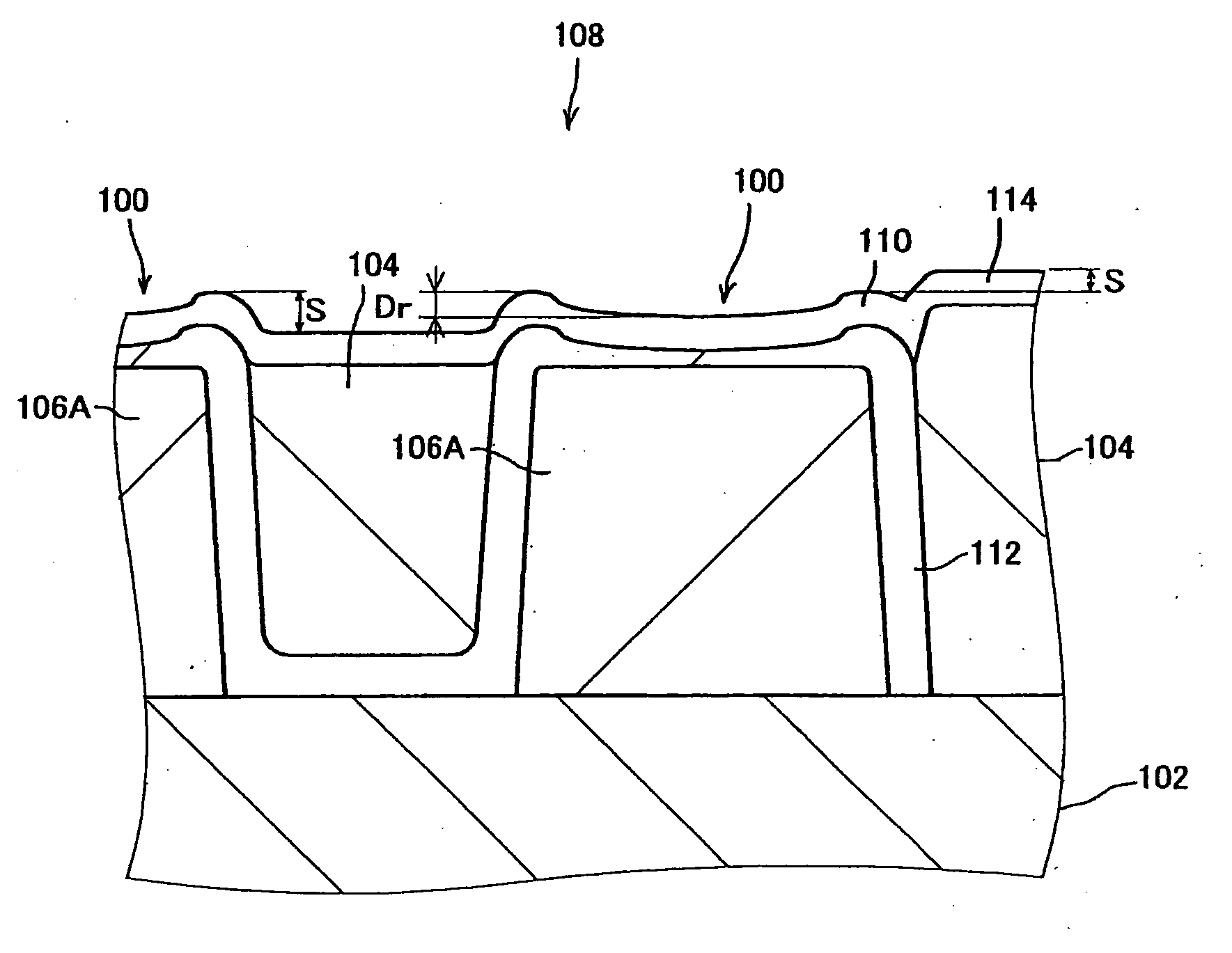Magnetic recording medium and magnetic recording and reproducing apparatus
a recording medium and magnetic recording technology, applied in the field of magnetic recording medium and magnetic recording and reproducing apparatus, can solve the problems of limiting the processing of the magnetic head, improper recording, and the limit of the improvement of the areal density by the conventional development approach, and achieve the effect of high areal density and high reliability
- Summary
- Abstract
- Description
- Claims
- Application Information
AI Technical Summary
Benefits of technology
Problems solved by technology
Method used
Image
Examples
working examples
[0081] Eight types of magnetic recording media 12 having the structures that were the same as that of the first exemplary embodiment (see FIG. 3 and other drawings), that of the third exemplary embodiment (see FIG. 5) and that of the fifth exemplary embodiment (see FIG. 7) were manufactured. Ten magnetic recording media 12 were manufactured for each of the eight types. The structure of the main part of the manufactured magnetic recording media 12 is described below.
[0082] The substrate 22 has a diameter of approximately 65 mm and is formed of glass. The recording layer 24 has a thickness of approximately 20 nm and is formed of a CoCrPt alloy. The filling elements 28 are formed of SiO2. The protective layer 36 has a thickness of approximately 2 nm and is formed of DLC. The lubricating layer 38 has a thickness of approximately 1 nm and is formed of PFPE.
[0083] A specific manufacturing method of those magnetic recording media 12 is now described briefly. First, the underlayer 40, the...
PUM
 Login to View More
Login to View More Abstract
Description
Claims
Application Information
 Login to View More
Login to View More - R&D
- Intellectual Property
- Life Sciences
- Materials
- Tech Scout
- Unparalleled Data Quality
- Higher Quality Content
- 60% Fewer Hallucinations
Browse by: Latest US Patents, China's latest patents, Technical Efficacy Thesaurus, Application Domain, Technology Topic, Popular Technical Reports.
© 2025 PatSnap. All rights reserved.Legal|Privacy policy|Modern Slavery Act Transparency Statement|Sitemap|About US| Contact US: help@patsnap.com



